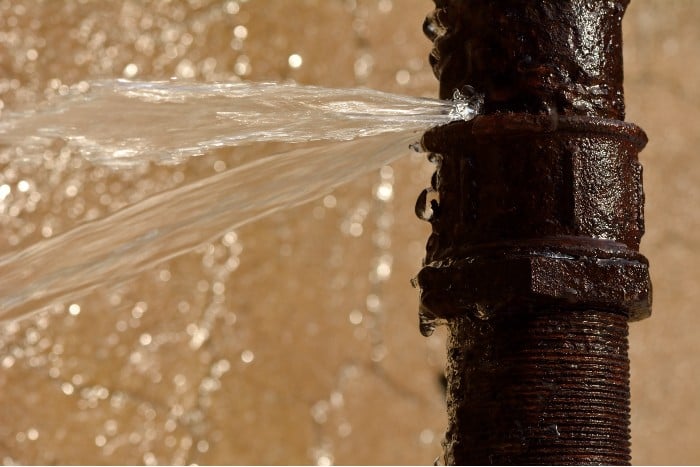How do you feel in regards to Common Water Leaks In House?

Leakages not only create waste of water yet can likewise trigger unnecessary damage to your home and promote unwanted organic growth. Water leakages may go unnoticed considering that most of the pipework in our home is concealed. By understanding as well as looking for day-to-day scenarios that trigger leaks, you can secure your residence from future leakages and also unnecessary damages. Today, we will consider six leakage creates that might be triggering your pipelines to leak.
Elbowing in roots
A lot of water leaks start outside the home instead than inside it. You may see wet spots or sinkholes in your yard, and that may mean that tree origins are invading water lines triggering water to seep out.
Corroded water systems
As time goes by, your plumbing system ages and also corrosion such as rust might begin eating away the pipelines. This might be the root cause of discoloration or bending on your pipes. This calls for an assessment with your plumber instantly. Think about changing the pipes because they are at a higher danger of corrosion than the newer designs if our plumbing system is old.
Malfunctioning Pipeline Joints
The point at which your pipes connect is frequently the weakest link in the waterline. Pipe joints can weaken gradually, leading to water leaks. The majority of pipeline joints are not conveniently visible. If you have noisy pipelines that make ticking or banging sounds, especially when the hot water is turned on, your pipeline joints are possibly under a great deal of stress. It is recommended to have your plumber check your system yearly.
Instant temperature changes.
Severe temperature adjustments in our pipelines can cause them to expand and also acquire unexpectedly. This development and tightening might trigger splits in the pipelines, especially if the temperature level are below freezing.
Poor Water Connectors
At times, a leak can be created by loose hose pipes and pipelines that supply your devices. In situation of a water connections leakage, you might notice water running straight from the supply line or puddles around your appliances.
Blocked Drains
Clogged drains pipes might be bothersome and inconveniencing, yet they can often wind up causing an overflow bring about rupture pipelines. Maintain removing any kind of products that may go down your drains pipes that can clog them to prevent such aggravations.
All the above are reasons for leaks but not all water leaks arise from plumbing leakages; some leakages might come from roofing leaks. All leakages should be repaired immediately to avoid water damage.
Leakages not only create waste of water but can also trigger unneeded damages to your residence as well as advertise undesirable natural growth. By looking and also recognizing for everyday circumstances that trigger leakages, you can secure your residence from future leakages and also unneeded damage. Today, we will look at six leak triggers that might be creating your pipelines to drip.
At times, a leak can be triggered by loose pipes and also pipelines that provide your devices. In case of a water connections leak, you may discover water running directly from the supply line or puddles around your home appliances.
How To Check For Water Leak In Your Home
How To Check for Leaks
The average household's leaks can account for nearly 10,000 gallons of water wasted every year and ten percent of homes have leaks that waste 90 gallons or more per day. Common types of leaks found in the home are worn toilet flappers, dripping faucets, and other leaking valves. These types of leaks are often easy to fix, requiring only a few tools and hardware that can pay for themselves in water savings. Fixing easily corrected household water leaks can save homeowners about 10 percent on their water bills.
To check for leaks in your home, you first need to determine whether you're wasting water and then identify the source of the leak. Here are some tips for finding leaks:
Take a look at your water usage during a colder month, such as January or February. If a family of four exceeds 12,000 gallons per month, there are serious leaks.
Check your water meter before and after a two-hour period when no water is being used. If the meter changes at all, you probably have a leak.
Identify toilet leaks by placing a drop of food coloring in the toilet tank. If any color shows up in the bowl after 10 minutes, you have a leak. (Be sure to flush immediately after the experiment to avoid staining the tank.)
Examine faucet gaskets and pipe fittings for any water on the outside of the pipe to check for surface leaks.
Undetected water leaks can happen without the home or business owner even realizing. If you suspect a water leak, but not able to find the source. It is time to contact a professional water leak detection service, The Leak Doctor.
How To Find a Water Leak In Your Home
https://www.leakdoctor.com/blog/How-To-Check-For-Water-Leak-In-Your-Home_AE197.html

Do you appreciate reading up on How Fast Water Damage Can Ruin Your Home? Place a comment below. We'd be delighted to find out your ideas about this blog. We hope to see you back again in the near future. Sharing is caring. Who knows, you may just be doing someone a favor. Thank you for going through it.
Source This Article